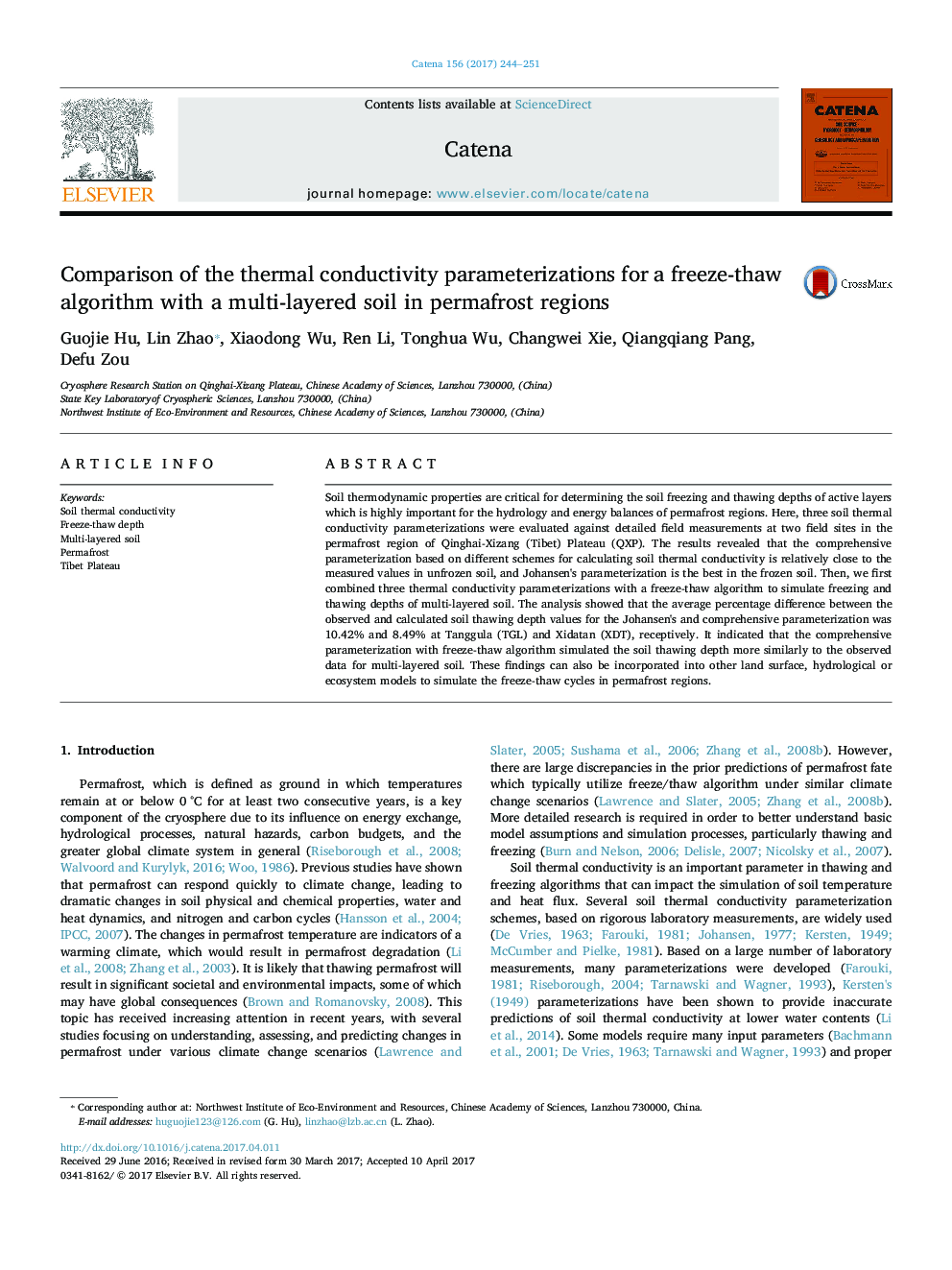| Article ID | Journal | Published Year | Pages | File Type |
|---|---|---|---|---|
| 5770000 | CATENA | 2017 | 8 Pages |
Abstract
Soil thermodynamic properties are critical for determining the soil freezing and thawing depths of active layers which is highly important for the hydrology and energy balances of permafrost regions. Here, three soil thermal conductivity parameterizations were evaluated against detailed field measurements at two field sites in the permafrost region of Qinghai-Xizang (Tibet) Plateau (QXP). The results revealed that the comprehensive parameterization based on different schemes for calculating soil thermal conductivity is relatively close to the measured values in unfrozen soil, and Johansen's parameterization is the best in the frozen soil. Then, we first combined three thermal conductivity parameterizations with a freeze-thaw algorithm to simulate freezing and thawing depths of multi-layered soil. The analysis showed that the average percentage difference between the observed and calculated soil thawing depth values for the Johansen's and comprehensive parameterization was 10.42% and 8.49% at Tanggula (TGL) and Xidatan (XDT), receptively. It indicated that the comprehensive parameterization with freeze-thaw algorithm simulated the soil thawing depth more similarly to the observed data for multi-layered soil. These findings can also be incorporated into other land surface, hydrological or ecosystem models to simulate the freeze-thaw cycles in permafrost regions.
Related Topics
Physical Sciences and Engineering
Earth and Planetary Sciences
Earth-Surface Processes
Authors
Hu Guojie, Zhao Lin, Wu Xiaodong, Li Ren, Wu Tonghua, Xie Changwei, Pang Qiangqiang, Zou Defu,
